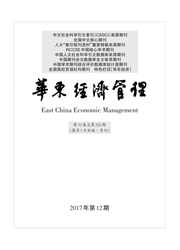

 中文摘要:
中文摘要:
文章运用最有效距离为前沿面顶点的改进非期望SBM模型和GMM动态回归模型,对山东省2005—2015年17地市工业行业的能源效率及其影响因素进行实证研究。结果表明:山东省工业能源效率整体水平偏低,节能潜力为16%~36%;各地市间工业能源效率存在显著差异,但差异程度不断缩小,低效率地市不断“追赶”高效率地市;影响因素中能源消费结构和产业结构对能源效率有较强的抑制作用,而经济发展水平、技术创新和开放程度对能源效率提升作用较小。
 英文摘要:
英文摘要:
This paper makes an empirical study on industrial energy efficiency and its influencing factors of 17 prefecture-level cities in Shandong province from 2005 to 2015 by using the improved most effective distance undesirable SBM model and GMM dynamic regression model. The results show that: The overall level of industrial energy efficiency in Shandong province is low, the energy saving potential is about 16% to 36%; The industrial energy efficiency is significantly different between all the cities, hut the degree of difference is shrinking, and inefficient cities are constantly "catching up with" efficient cities; Among influencing factors, energy consumption structure and industrial structure have strong inhibitory effects on energy efficiency, whereas economic development level, technological innovation and the degree of openness have small promoting effects on energy efficiency.
 同期刊论文项目
同期刊论文项目
 同项目期刊论文
同项目期刊论文
 期刊信息
期刊信息
